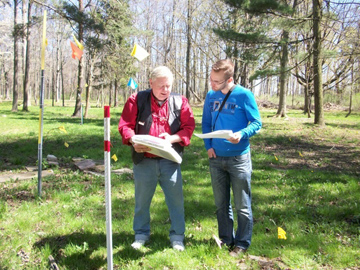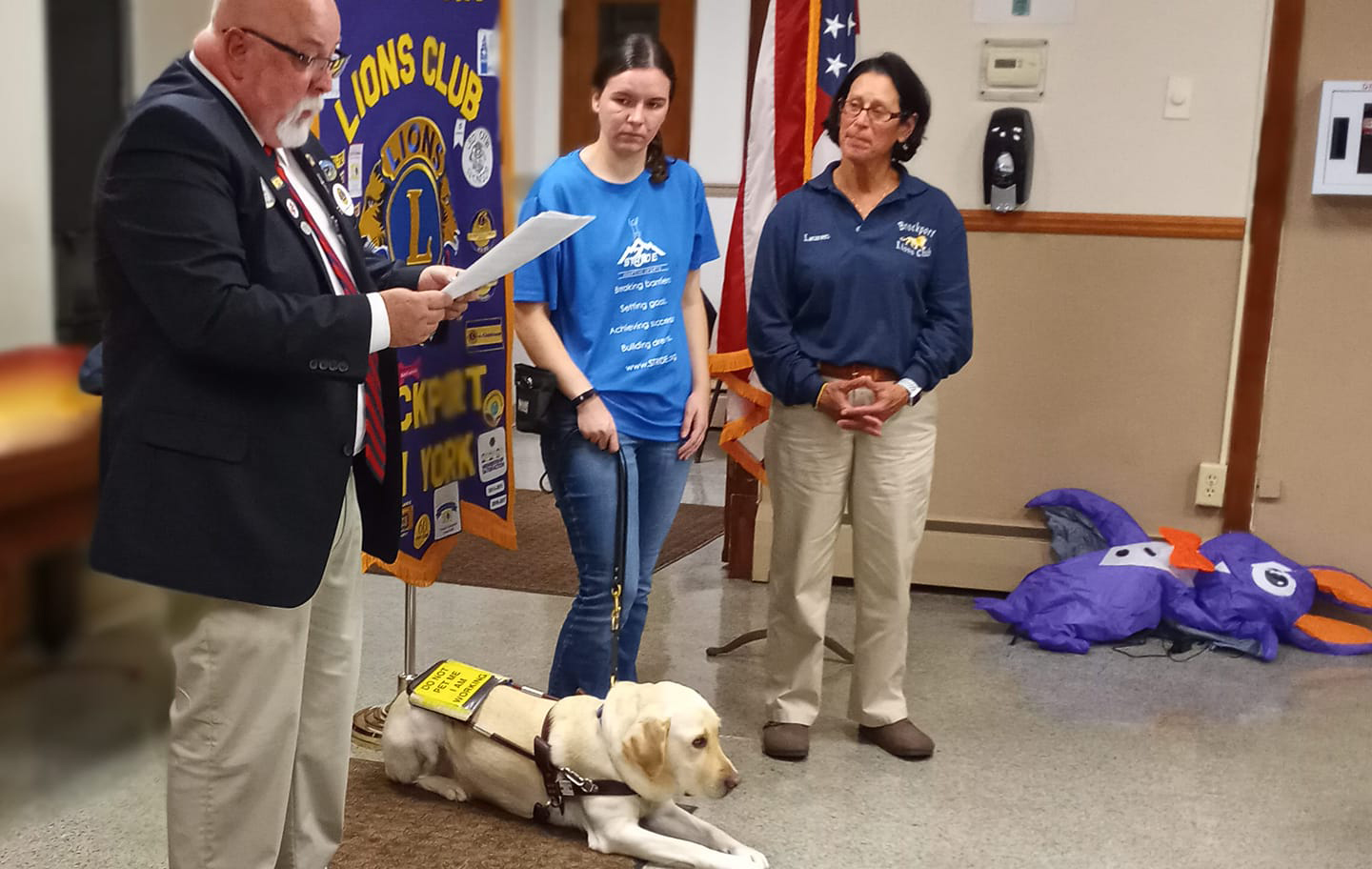Grandson of former POW tours Hamlin camp site
by Kristina Gabalski
 Andreas Anschutz of Germany, grandson of former German POW Gottfried Schultze, visited the former CCC/POW Camp in Hamlin on May 2. His grandfather was a prisoner there between 1944-46. Ed Evans gave him a tour of the site where volunteers have worked extensiviely to clear overgrowth, revealing evidence in the ground where buildings once stood. A very special guest was able to visit the former CCC/WWII POW Camp at Hamlin Beach State Park Thursday, May 2.
Andreas Anschutz of Germany, grandson of former German POW Gottfried Schultze, visited the former CCC/POW Camp in Hamlin on May 2. His grandfather was a prisoner there between 1944-46. Ed Evans gave him a tour of the site where volunteers have worked extensiviely to clear overgrowth, revealing evidence in the ground where buildings once stood. A very special guest was able to visit the former CCC/WWII POW Camp at Hamlin Beach State Park Thursday, May 2.
Thirty-two year old Andreas Anschutz of Pforzheim, Germany – the grandson of Gottfried Schulze, a former German prisoner of war who lived at the Hamlin camp from August of 1944 until January of 1946 – took a detour from a bus tour of the East coast and Canada to visit the camp as well as see Hamlin Beach State Park and the warehouse at the Duffy Mott canning factory where his grandfather worked for 80 cents a day.
“This is amazing,” Andreas said when he arrived at the site. He was given the grand tour by CCC/POW camp volunteer Ed Evans, who has spear-headed the effort to clear the site and make it accessible to the public.
Evans has made contact with two former German “guests of the U.S. Government,” who stayed at the Hamlin camp, one of them being Gottfried and the other Heinrich Willert. Both men are in their late eighties and met each other for the first time recently thanks to the help of Evans. Both were at Hamlin at the same time during WWII and even lived near each other in Germany for years, but had never formally met. Gottfried has sent several artifacts (as well as memoirs) to Hamlin that will displayed in a future museum planned for the site.
Andreas was able to see the site of the barracks where his grandfather slept, the mess hall where he ate and even the remains of the camp’s latrine.
“The only thing that would be more exciting,” Evans said of Andreas’ visit, “would be to have Andreas’ grandfather here.”
Evans showed Andreas various artifacts gleaned from the top of the soil at the site, including small milk bottles, government issue forks, beer bottles (prisoners were allowed to buy two bottles per day), and a white porcelain cereal bowl in perfect condition.
“It’s a phenomenal find,” Evans told Andreas, and explained that since the POWs were the last people on the site, it’s very likely his grandfather at some time might have used that very same bowl for his breakfast.
Evans also shared historical photos of the camp which are part of a presentation he gives to local grade school students.
“I talk about Gottfried all the time,” Evans told Andreas. He had been to talk with Hilton Central students the day before Andreas’ visit and Evans said the students all wished they could come and meet Andreas.
Evans explained to Andreas how his grandfather helped solve a mystery regarding gunfire heard one night in the camp from one of the watchtowers.
Local residents remember hearing the shots, but there was no account as to what exactly happened.
“It was not a POW who managed to get into the tower,” Evans said. “It was an American G.I. who went berzerk.”
No one was injured in the event, Evans explained, and the prisoners were never in danger, but thanks to Gottfried, “It’s no longer a guess,” Evans said, as to what happened.
Before touring the camp, Andreas was given lunch in the shelter in Area #1 of the state park provided by the Friends of Hamlin Beach State Park. He was presented with a Resolution of Appreciation from the Hamlin Town Board by Supervisor Thomas Breslawski to hand deliver to his grandfather upon his return to Germany. The resolution expresses gratitude to Gottfried for all he has done to provide information about the camp, especially regarding its many mysteries.
Mary Smith, the author of Remembering Hamlin: 1802-2002, presented an autographed copy of her book, donated by Supervisor Breslawski, to Andreas.
After his tour of the CCC/POW camp, Andreas said it was very moving to be able to stand on the very same spot where his grandfather spent one-and-a-half years of his life so long ago and so far from home.
“It’s a great pleasure for me,” he said, and thanked Evans for his efforts in organizing and facilitating the visit.
The tour was a combined effort of the CCC/POW camp volunteers, the State Park staff, the Friends of Hamlin Beach State Park and Supervisor Breslawski.
Andreas also brought Evans a very special relic of the camp from his grandfather – a fancy calf-skin wallet he had purchased at the Hamlin POW camp store and treasured for decades. Inside Gottfried included some “camp money” which looks like raffle tickets and a generous donation.
Evans was very moved by the gift – which is in pristine condition.
“He doesn’t owe me anything,” Evans said, “I owe him so much … I appreciate him so much.”
“After 70 years it is in such good shape,” Andreas noted. “My grandfather sent it back to Ed so it would be back in its (original) place.”
Evans told Andreas that the prisoners were well cared for and that the U.S. military “worked to make their stay comfortable.” Many prisoners went out to work on local farms and, like Gottfried, in local canning factories. During the especially harsh winter of 1945, they dug out parts of the City of Rochester and bagged coal to distribute to people in their homes.
Gottfried enjoyed his work at Duffy Mott, Evans said, and local residents also enjoyed the company of the POWs, often coming to the camp to watch the prisoners play “real soccer games.”
Evans was able to take Andreas to the Duffy Mott warehouse where his grandfather worked and Andreas enjoyed dinner at the Hamlin Station Restaurant with Evans and his wife, Sue, before being taken back to Niagara Falls to meet up with his tour group.
Evans noted the visit is likely the closest they will ever come to having a former resident of the POW camp at the site.



